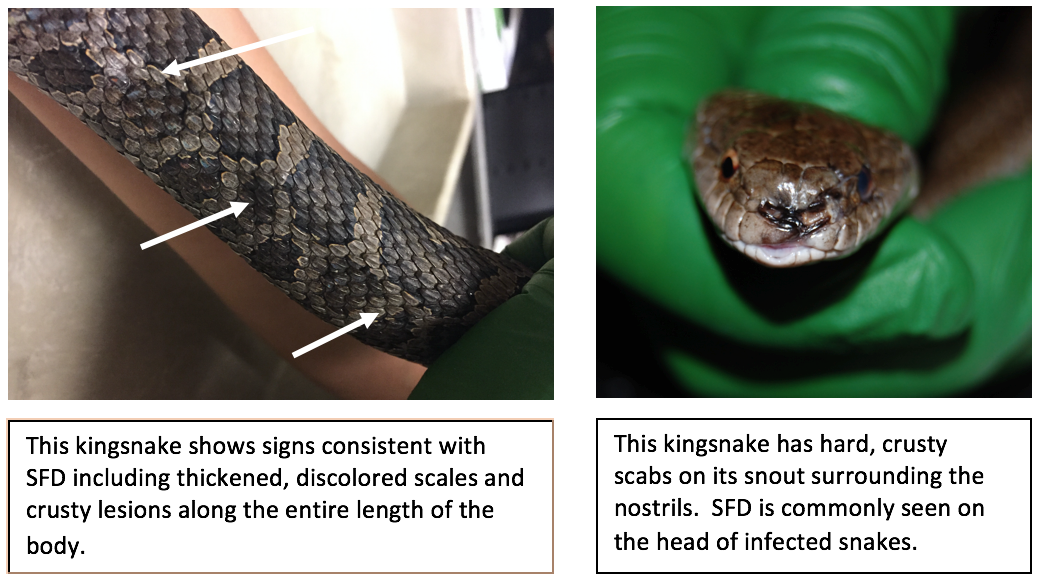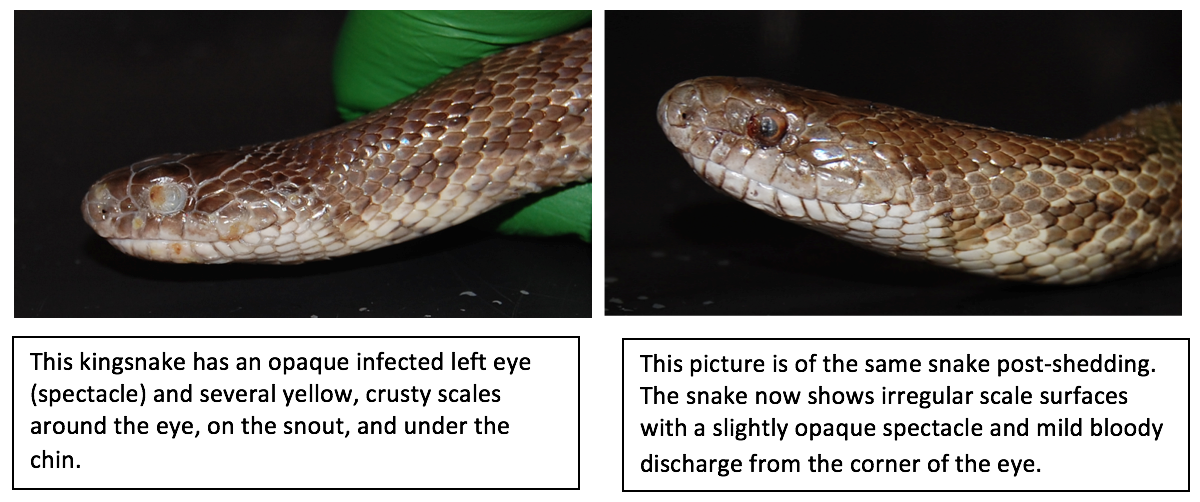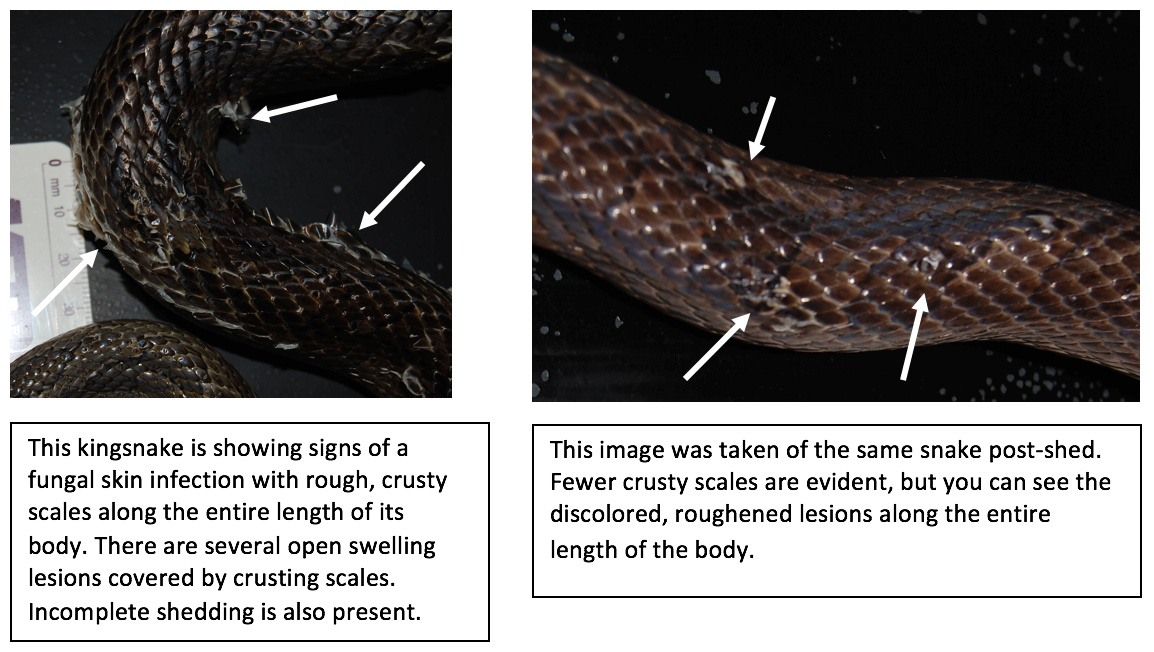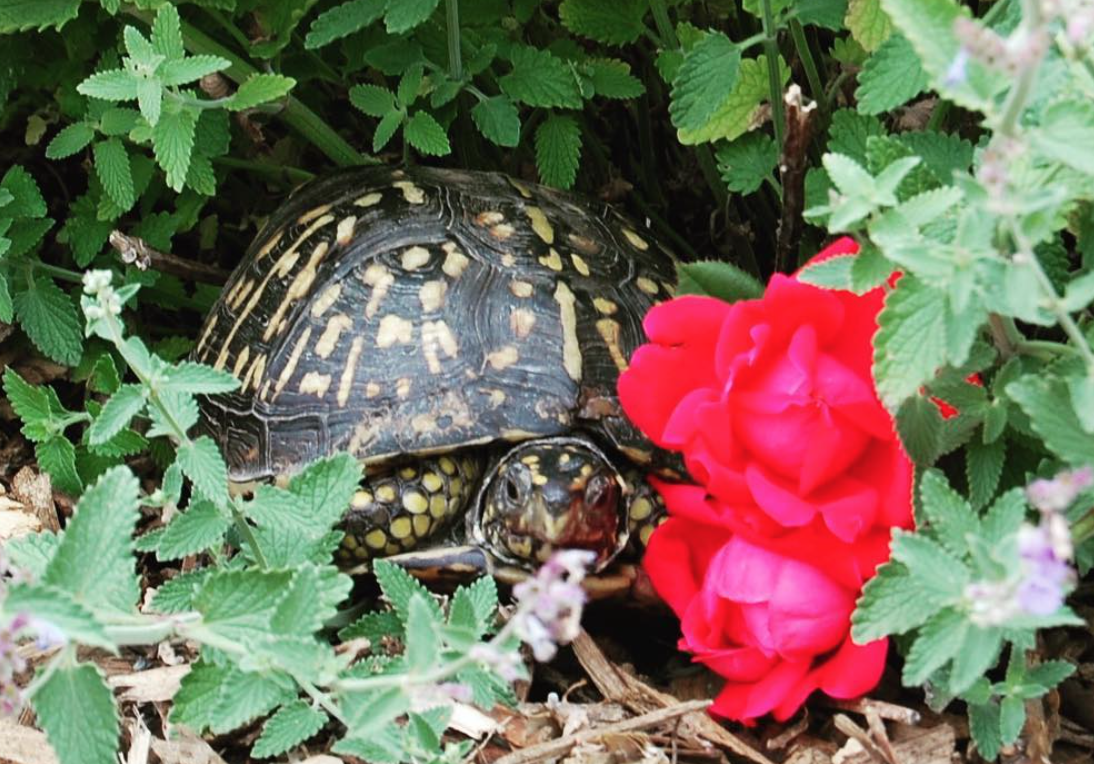If you don’t keep up with infectious diseases affecting reptiles, then you may not be familiar with Snake Fungal Disease (SFD). SFD is attributed to the fungal pathogen Ophidiomyces ophidiicola, and is known for causing a nasty dermatitis in many snake species.
Maybe you haven’t heard of SFD, but you’ve heard of white-nose syndrome in bats? White-nose syndrome had a devastating impact on bat populations, killing millions of bats within the United States. We still have a lot to learn about the distribution of SFD, but there is a concern that we will see a similar outcome from the fungal disease in snake populations as we did bats from white-nose syndrome. If you followed my comparison… that means we will (sadly) lose lots and lots of snakes to the aggressive fungal infection. This would be BAD because snakes are VERY IMPORTANT for the ecosystem and we need them!
Over the past year, I have seen many snakes suffering from SFD and, although there are similarities, the disease does not always manifest the same way in each individual. Since I will spend many days this summer in the field looking for clinical signs of SFD in free-ranging snake populations, I want to show a few examples of the lesions we are going to be looking for out in the field.
All the following pictures were taken of individuals that I have been working with thus far this summer. All of which are non-venomous prairie kingsnakes (Lampropeltis calligaster) that tested positive for the SFD causing fungus through qPCR.




There is still a lot unknown about the the transmission and distribution of Snake Fungal Disease. One thing we do know is that it is a problem for both non-venomous and venomous snake populations. Wildlife Epi Lab has surveyed several areas in different states for the disease, but there are still many places that have not yet been searched.
In a few weeks, I will be out in the field surveying different sites in Indiana to evaluate the health of the timber rattlesnake (Crotalus horridus) with conservation biologist, Dr. Sarah Baker. We have seen several severe cases of SFD in timbers, so we are curious to see if the disease is impacting Indiana timber populations!
Stay tuned for more blogs throughout the summer as we hopefully learn more about the disease and how it manifests!

(I may only write about snakes, but this turtle patient deserves a shout out for being the best patient! Stay tuned (again) for a contribute to Elle Woods The Turtle)
